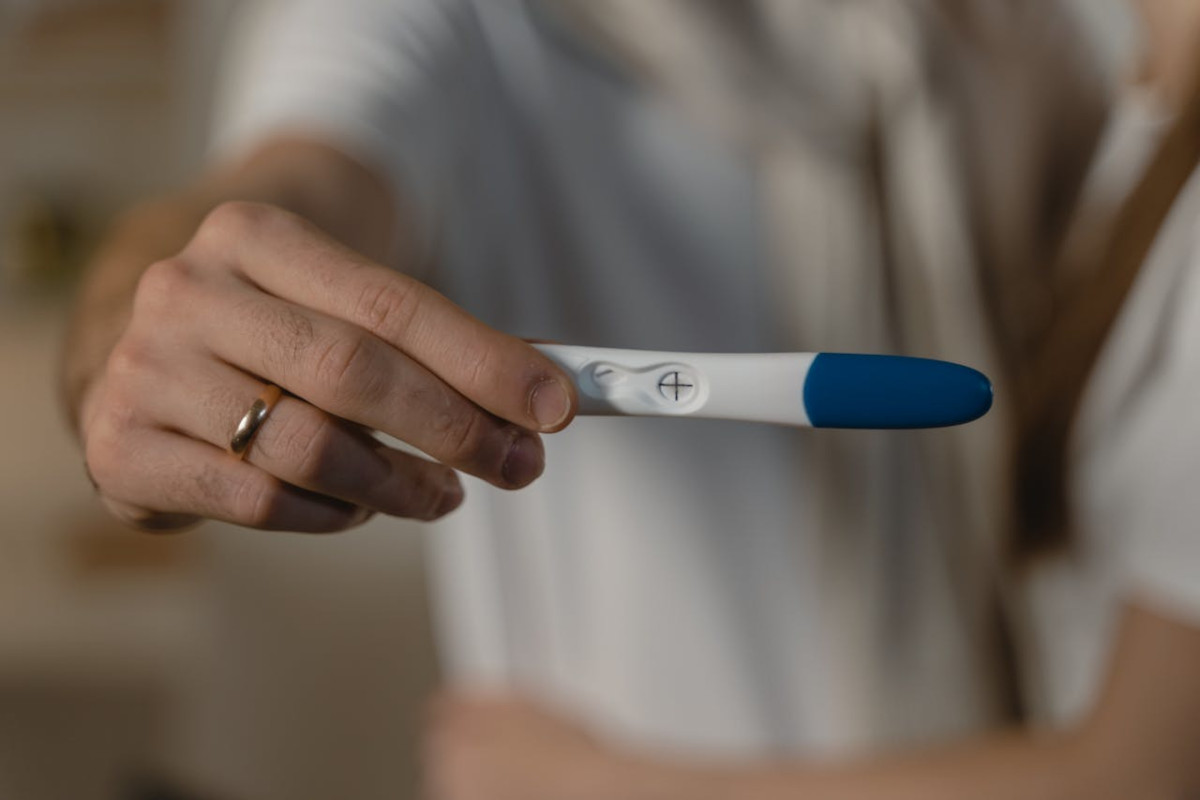
Fetal Alcohol Syndrome Explained: Causes, Symptoms, And Prevention
Fetal alcohol syndrome (FAS) is a preventable condition caused by prenatal alcohol exposure, leading to lifelong physical, cognitive, and behavioral challenges. Early diagnosis and intervention can significantly improve outcomes, emphasizing the need for public awareness and comprehensive support for affected families. Avoiding alcohol during pregnancy is crucial, as no safe level of consumption has been established.
Table of Contents:
What is Fetal Alcohol Syndrome (FAS)?
Fetal alcohol syndrome, or, FAS, is a serious condition that occurs when a baby is exposed to alcohol during pregnancy. Alcohol consumed by a pregnant person can pass through the placenta and reach the developing baby, disrupting its normal growth and development. This can lead to lifelong challenges, including physical differences, learning disabilities, and behavioral struggles. The good news is that FAS is completely preventable if alcohol is avoided during pregnancy.
The understanding of FAS has evolved greatly over the years. In the early 1970s, doctors and researchers began to notice a pattern of symptoms in children born to people who consumed alcohol while pregnant. These symptoms included distinct physical traits and developmental delays. Since then, medical research has continued to deepen our knowledge of how prenatal alcohol exposure affects a baby and reinforced the importance of avoiding alcohol during pregnancy.
Fetal alcohol syndrome is a global issue, but its frequency varies depending on access to healthcare, cultural attitudes toward drinking, and public health awareness. Globally, about 7.7 in 1,000 babies are born with this condition, though rates can be higher in areas where alcohol use during pregnancy is more common or where education and resources are limited (1). In some regions, the condition may even be underreported because of limited access to healthcare or diagnostic tools.
This condition is considered a major public health concern because of the significant, lifelong impact that it can have on individuals, families, and communities. Children with fetal alcohol syndrome often need ongoing medical care, educational support, and specialized services. Plus, questions like how much drinking causes FAS remain unanswered because even small amounts of alcohol can carry risks, especially early in pregnancy.
Alcohol Detox
Alcohol detox is the first and most important step of someone's addiction recovery journey. Our custom, medically-managed treatment program can help you overcome addiction and equip you with the tools you need to take back control of your life for good.
Book NowUnderstanding Fetal Alcohol Syndrome
When a pregnant person consumes alcohol, it can reach the developing baby through the placenta. Because the baby’s liver is not fully developed, it cannot filter out the alcohol properly. Alcohol interferes with normal development by disrupting how cells grow and function, especially in the brain and nervous system. This damage can happen at any stage of pregnancy, even before someone knows they are expecting.
Experts strongly advise against drinking alcohol during pregnancy, as even small amounts may pose a risk. However, understanding how much drinking causes FAS remains uncertain, because no safe level of alcohol has been established.
Fetal alcohol spectrum disorders is a term used to describe a range of conditions caused by alcohol exposure during pregnancy. These include fetal alcohol syndrome, the most severe form, as well as other disorders like alcohol-related neurodevelopmental disorder (ARND) and alcohol-related birth defects (ARBD).

The main difference between this condition and other conditions within the spectrum is that FAS has some distinct physical traits, such as specific FASD facial features and growth delays, in addition to brain-related challenges. On the other hand, other conditions within fetal alcohol spectrum disorders may not show physical signs but still involve learning and behavioral difficulties.
On a cellular level, alcohol affects how a fetus develops by disrupting critical processes like cell division, nutrient delivery, and the formation of neural pathways. This can result in permanent changes to the structure and function of the brain and other organs. For example, a baby born with FAS may experience challenges like impaired memory, difficulty learning, and emotional regulation problems due to how alcohol disrupts brain development (2).
Related Conditions Within the FASD Spectrum
Understanding the spectrum of conditions caused by prenatal alcohol exposure helps differentiate the specific challenges involved. FAS symptoms are part of a larger group of conditions known as fetal alcohol spectrum disorders (FASD). While this condition is the most severe form, other conditions such as alcohol-related neurodevelopmental disorder (ARND) and alcohol-related birth defects (ARBD) also result from alcohol exposure during pregnancy. These conditions vary in how they affect individuals, but all can cause lifelong difficulties.
Alcohol-Related Neurodevelopmental Disorder (ARND)
ARND is a condition where children face significant challenges with brain development and behavior but may not show the physical traits seen in a fetal alcohol syndrome baby. Children with ARND often struggle with learning, memory, and attention. They may also experience mood regulation problems, making it hard for them to adapt to everyday situations. Unlike FAS, ARND does not usually involve noticeable physical differences, which can sometimes make diagnosis more challenging. These invisible difficulties can impact a child’s school performance and social relationships, and they may require specialized support to help them thrive.
Alcohol-Related Birth Defects (ARBD)
ARBD refers to physical birth defects caused by prenatal alcohol exposure. These may include problems with the heart, kidneys, bones, or hearing. While ARBD does not always include the brain-related challenges seen in other FASD conditions, it can still significantly impact a child’s health and quality of life. For example, a baby with ARBD might require surgeries or long-term medical care to address these physical issues. Just like the other conditions in the spectrum, ARBD is entirely preventable by avoiding alcohol during pregnancy.
Symptoms of FAS
Children with fetal alcohol syndrome experience a wide range of symptoms that can affect their physical, cognitive, and emotional development. These symptoms can vary in severity, but they all stem from prenatal alcohol exposure.
One of the most recognizable FASD symptoms is the distinct set of fetal alcohol syndrome facial features. These may include a smooth area between the nose and upper lip (known as the philtrum), a thin upper lip, and small eye openings. Also, the shape and appearance of the face can include differences in the size or positioning of the nose and chin. FAS related issues centered around the eyes, such as a wider-than-average space between them or smaller eye size, are also common.
Beyond just the facial features, children with FAS often experience growth delays, which can result in a baby being smaller than average at birth and continuing to grow more slowly throughout childhood (3). Skeletal abnormalities, such as a curved spine or joint issues, may also occur (4). These physical characteristics are some of the main indicators of FAS, but are not the only challenges these children face.
Neurological issues are another significant part of symptoms associated with this condition (5). Many children with FAS struggle with cognitive impairments, including difficulty with memory, problem-solving, and processing information. Behavioral challenges, such as impulsivity, hyperactivity, or difficulty managing emotions, are common as well. These children may also experience learning disabilities, which can make school very challenging. Mental health conditions, including anxiety and depression, are also often linked to FAS, further complicating a child’s ability to thrive in both social and academic environments.
Other health problems associated with FAS include heart defects, which can range from mild to severe, and vision and hearing difficulties that require ongoing care. Immune system challenges may also occur, making children more prone to infections (6).
Diagnosis and Assessment
Diagnosing fetal alcohol syndrome can be difficult because its symptoms can vary widely between people, and some overlap with other conditions. However, early diagnosis is very important to ensure that children and their families get the support they need. One of the first steps in diagnosing FAS is a thorough physical examination. Doctors look for specific traits, such as the distinct facial features. These features may include a smooth philtrum (the groove between the nose and upper lip), a thin upper lip, and smaller-than-average eye openings. While these traits are easier to identify in children, they can become less noticeable with age, making diagnosis more difficult. Looking at photos can sometimes help medical professionals compare physical features, especially when assessing older individuals.
In addition to physical traits, behavioral and neurological evaluations play a key role in diagnosis.These assessments help identify symptoms associated with FAS such as learning disabilities, memory problems, or difficulty with impulse control. A full evaluation may also include cognitive testing and observation of social interactions to determine how the individual’s brain and behavior may have been affected.
Diagnosing FAS in infants and very young children can be very difficult.

While some physical traits may be present at birth, neurological and behavioral symptoms often start to come about as the child grows. This is why ongoing monitoring is important, especially if prenatal alcohol exposure is known or suspected.
Age can also affect the accuracy of diagnosis. In older children or adults, the facial features of adults with this condition may be harder to identify because of changes in physical appearance over time. For these people, a detailed medical history and behavioral evaluations are often necessary in order to confirm the diagnosis.
Treatment and Management
Treating fetal alcohol syndrome focuses on managing the symptoms and providing support to improve the individual’s quality of life. While there is no cure for FAS, early intervention and ongoing care can make a big difference.
Treatment usually begins with a team of healthcare providers, including doctors, therapists, and educators, working together to address the specific needs of the individual. For children, this may include speech therapy, occupational therapy, and specialized educational plans to help with learning challenges. These interventions help address the specific symptoms that affect a child’s ability to communicate, focus, and adapt to daily routines. Behavioral therapy can help with managing emotions, improving social skills, and reducing impulsive behavior.
For adults with FAS, treatment usually focuses on helping them develop skills for independent living and managing long-term challenges. This might include job training, counseling, and continued support from social workers or community organizations. Since the distinct physical traits may fade over time, the focus for adults is often on addressing cognitive and behavioral symptoms rather than physical features.
While FAS cannot be cured, consistent, ongoing care can greatly improve the outcomes. Many people with FAS can achieve personal milestones and lead fulfilling lives with the right support.
Types of Support Services Available for Individuals and Families With FAS
Support services play a valuable role in helping people with fetal alcohol syndrome and their families manage challenges and improve their quality of life. For adults living with this condition, services often focus on life skills training, job placement programs, and counseling to help them with their daily responsibilities and maintain independence.
For families, support can include parenting classes, behavioral therapy for the child, and access to educational specialists who design learning plans that address specific challenges. Peer support groups also help families connect with others who understand the unique struggles of caring for someone with FAS.
Prevention Strategies
Preventing fetal alcohol syndrome is entirely possible. It requires avoiding alcohol during pregnancy. Since there is no clear answer to how much drinking causes FAS, health experts recommend avoiding alcohol completely while trying to conceive and throughout the entire pregnancy. Even small amounts of alcohol during the early stages of pregnancy can harm the development of a baby, so complete abstinence is the safest approach.
Public health strategies play an important role in prevention by raising awareness and providing education about the risks of drinking during pregnancy. Campaigns that encourage early prenatal care and discussions with healthcare providers help ensure that everyone receives clear information about avoiding alcohol.
Policy initiatives, such as warning labels on alcoholic beverages and public service announcements, also help with the prevention efforts. Community programs that support access to addiction treatment and counseling for those who may struggle with alcohol use can further reduce the risk.
Paternal Impact on Fetal Alcohol Spectrum Disorders
While much of the focus on fetal alcohol spectrum disorders has been on maternal alcohol consumption, research suggests that paternal alcohol use before conception may also play a role (7). Studies have indicated that alcohol consumption by fathers can potentially influence the health and development of a baby. Although the exact mechanisms are still being studied, scientists believe that alcohol may affect the quality of sperm, altering DNA and other genetic material that could impact fetal development.
This growing body of evidence highlights the importance of understanding how paternal factors contribute to fetal alcohol spectrum disorders. Research has linked paternal alcohol use with an increased risk of birth complications and developmental issues. These issues may include characteristics seen in symptoms, such as cognitive delays or behavioral challenges, even if the father’s alcohol use occurred before conception.
Paternal alcohol consumption could also indirectly affect the baby by influencing the mother’s health and environment during pregnancy. For example, heavy alcohol use in fathers might lead to stress or reduced support for the pregnant individual, which can negatively impact fetal development.
While physical traits such as specific facial features, particularly the eyes, are directly tied to maternal alcohol consumption, the role of paternal factors is an emerging area of study. These findings suggest that avoiding alcohol before conception may benefit not only fathers but also future generations. Raising awareness about this potential risk is an important step toward preventing fetal alcohol spectrum disorders and promoting healthier births.

Social and Economic Impact
The impact of fetal alcohol syndrome reaches far beyond the individual, significantly affecting families, communities, and society as a whole. Families often face emotional and financial challenges while supporting a child with fetal alcohol spectrum disorders, as lifelong care and specialized services may be required. This includes addressing physical traits as well as cognitive and behavioral symptoms.
On a broader scale, FAS imposes substantial costs on healthcare, education, and social services. Direct expenses include medical treatments and therapy, while indirect costs involve lost productivity and caregiver burdens. These combined effects highlight the urgent need for prevention and support programs to reduce the societal impact of fetal alcohol spectrum disorders.
Research and Future Directions
Ongoing research into fetal alcohol spectrum disorders (FASD) is exploring various areas to improve understanding and treatment. One focus is on the development of more effective diagnostic tools, including advanced imaging techniques and biomarkers, to identify FASD earlier and more accurately (8). Early intervention is crucial for better outcomes, and precise diagnostics can lead to more timely support.
New therapies are also under investigation. Recent studies suggest that compounds targeting oxidative stress and inflammation may help reduce the severity of neurodevelopmental deficits associated with FASD (9). These findings, although primarily from animal studies, indicate potential pathways for developing treatments that could minimize some of the effects of prenatal alcohol exposure.
Conclusion
Fetal alcohol syndrome is a lifelong condition that impacts physical, cognitive, and emotional development, but it is entirely preventable by avoiding alcohol during pregnancy. Early diagnosis is essential, as is being aware of the challenges faced by adults, or the developmental difficulties seen in a baby with FAS.
To help prevent this condition, it’s important to avoid drinking alcohol if you are pregnant or trying to conceive. Even small amounts can carry a great deal of risks, so staying alcohol-free during this time is the safest choice for your baby. If you or someone you know needs help to stop drinking, reach out to a healthcare provider or a local support group, they are there to help.
For families already impacted by FAS, resources like counseling, therapy, and educational programs can provide the support you need to make your way through these challenges. Do not hesitate to connect with healthcare professionals or community organizations dedicated to FAS support. You are not alone, and help is always available.
Alcohol Detox Program
If you or someone you love are struggling with alcohol use, getting professional help is essential for safe and successful detox and recovery.
Our medically-managed detox and recovery program is tailored to your needs to help you overcome withdrawal symptoms and achieve lasting sobriety. One of our medical professionals will bring your appointments directly to your home , offering unparalleled privacy and discretion.
Book an appointment by clicking the button below.
Book NowReferences:
- Lange S, Probst C, Gmel G, Rehm J, Burd L, Popova S. Global Prevalence of Fetal Alcohol Spectrum Disorder Among Children and Youth: A Systematic Review and Meta-analysis. JAMA Pediatr. 2017;171(10):948-956. doi:10.1001/jamapediatrics.2017.1919.
- Granato A, Dering B. Alcohol and the Developing Brain: Why Neurons Die and How Survivors Change. Int J Mol Sci. 2018;19(10):2992. Published 2018 Sep 30. doi:10.3390/ijms19102992.
- Carter RC, Jacobson JL, Sokol RJ, Avison MJ, Jacobson SW. Fetal alcohol-related growth restriction from birth through young adulthood and moderating effects of maternal prepregnancy weight. Alcohol Clin Exp Res. 2013;37(3):452-462. doi:10.1111/j.1530-0277.2012.01940.x.
- Myrie SB, Pinder MA. Skeletal muscle and fetal alcohol spectrum disorder. Biochem Cell Biol. 2018;96(2):222-229. doi:10.1139/bcb-2017-0118.
- Mattson SN, Bernes GA, Doyle LR. Fetal Alcohol Spectrum Disorders: A Review of the Neurobehavioral Deficits Associated With Prenatal Alcohol Exposure. Alcohol Clin Exp Res. 2019;43(6):1046-1062. doi:10.1111/acer.14040.
- Strasser A, Jost PJ, Nagata S. The many roles of FAS receptor signaling in the immune system. Immunity. 2009;30(2):180-192. doi:10.1016/j.immuni.2009.01.001.
- Cicero TJ. Effects of Paternal Exposure to Alcohol on Offspring Development. Alcohol Health Res World. 1994;18(1):37-41.
- Murawski NJ, Moore EM, Thomas JD, Riley EP. Advances in Diagnosis and Treatment of Fetal Alcohol Spectrum Disorders: From Animal Models to Human Studies. Alcohol Res. 2015;37(1):97-108.
- Terracina S, Tarani L, Ceccanti M, et al. The Impact of Oxidative Stress on the Epigenetics of Fetal Alcohol Spectrum Disorders. Antioxidants (Basel). 2024;13(4):410. Published 2024 Mar 28. doi:10.3390/antiox13040410.


